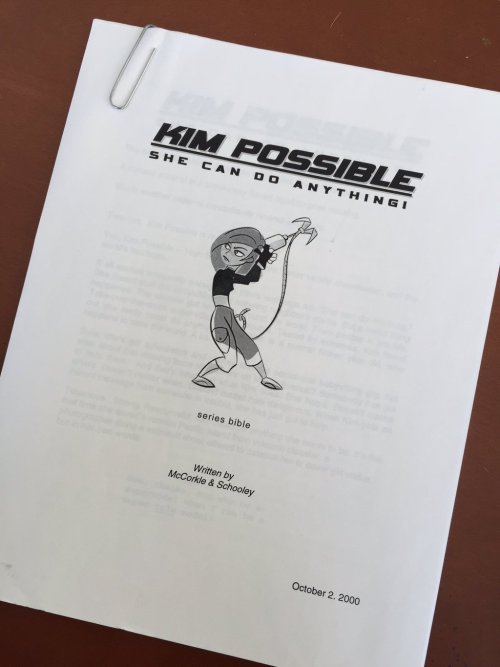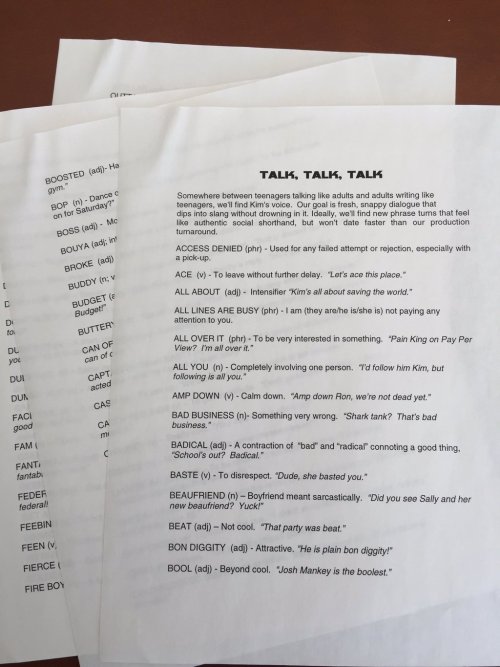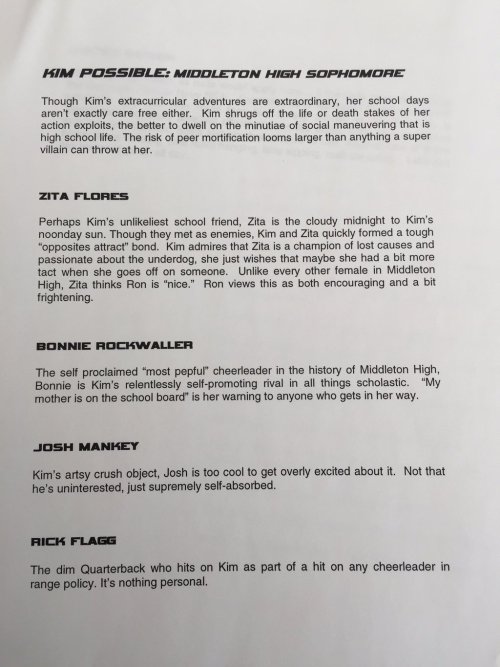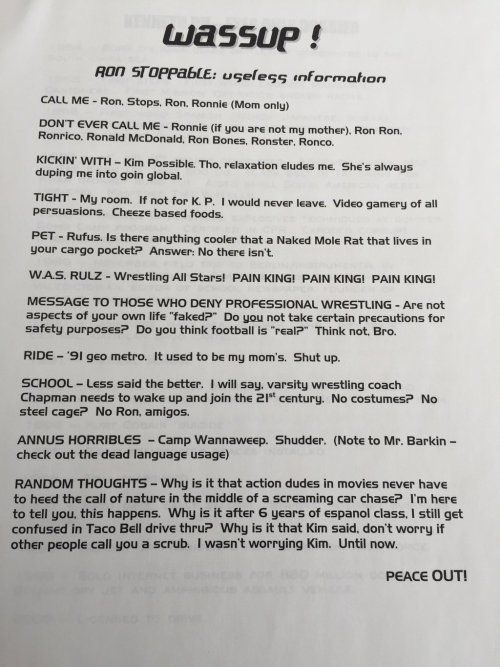Structuring A Series: Part III
Structuring a Series: Part III
Structuring a Series Part III: Planning a Series from 1 Book
Welcome back to Part III of Structuring a Series! If you haven’t read Parts I and II yet, you might want to. Or at least familiarize yourself with Dan Wells’s 7 Point Plot Structure. (No word on which one is a bigger time commitment.) Ok, so… you want to write a trilogy (or some other type of close-ended series with at least one arc running through the whole thing), BUT you only know what you…
View On WordPress
More Posts from Feralpaules and Others

The Left Hand of Darkness went on to win both the Nebula and Hugo Awards, among others, has been reprinted more than 30 times, and is considered a groundbreaking work of science fiction.
It’s also a bloody good read.
source
Are there any works in the post-apocalyptic genre with post-apocalyptic librarians? People who worked in the public library and after the Bad Thing decide to stay and keep the library clean, safe and available for anyone who needs it. People can’t remove books from the premises anymore, because they’re too precious, but you can stay as long as you want and read them or copy them out–the librarians encourage making copies, so that the information can circulate beyond the physical boundaries of the library.
After a while it becomes an unspoken reality of the post apocalyptic society that you Just Don’t fuck with the library. You don’t fight there, you don’t steal from it, you don’t allow harm to come to librarians when they have to leave the building for supplies.
People donate food and books and paper with no expectation of reciprocity, because the librarians don’t ask for anything when you need a place to hide or information or, fuck, to read a schlocky crime novel because you need to escape reality in some purple prose.
Submitted via Google Form:
I am quite intrigued about how animals seem to have higher tolerance for pollution and germs while humans seem to lose it. Animals still just eat off the ground and drink straight from streams. However isn’t that exactly what our ancestors did? I absolutely do realise the world in the past also was less polluted than now. But past humans and animals did that in the past in the same environment, while in the present day environments only animals do this and humans can’t. Yes, animals and humans are of course always getting sick, but animals have way less access to healthcare than humans and manage to thrieve while humans need all this heathcare. Also, it is very evident in humans in human communities lacking healthcare being worse off. But with animals, I don’t seem to see the problems occuring as I’d expect for almost no healthcare for them. At least in this way.. the only biggest issues are like lost of land/hunting, and if health is the main issue? Basically, no heathcare affects humans worse than wild animals. And attitudes are if humans eat something off the ground it’s panic, an animal.. nope. So for actual story writing, I want to address these things in my story where both people and animals are time travelling. Also, I suppose how environmental changes would affect these out of time people.
Feral: there are a lot of assumptions in your ask that just don’t hold up.
Assumption #1: Animals have a higher tolerance for pollution and germs than humans do. Animals do get sick and die. In the case of pollution, higher pollution in a given area is more indicative of human life than animal life. Humans and our domesticated pets are the creatures living in cities with horrible smog conditions and the like, and while pollution definitely causes illnesses and disabilities in humans, one of the reasons you don’t see wild animals as much in these areas is because the development and pollution it causes has killed them off. As for germs, it is true that in industrialized countries, humans are probably more susceptible to germs, bacteria, viruses, etc, due to the inhibitions sterilized environments place on the development of natural immune systems. But animals still get sick and die, too; they may not die as frequently from illness as humans (I have no data one way or another), but I would argue that many also just don’t live long enough to die of illness over another cause.
Assumption #2: Animals eat straight off the ground and drink from streams, and that’s what our ancestors did. Our ancestors always cooked - eating straight from a raw carcass means more bacteria, more difficult digestion, and less calories. And it’s very likely that humanity didn’t exist before cooking, and only exists because of cooking. Our reticence to drink directly from natural water sources has a lot more to do with human pollution than any naturally occuring bacteria; see the multiple cholera outbreaks in history. Also, a polluted water source will usually kill the animals that live in that water source, the decaying carcasses of which further pollutes the source, and animals drinking from that source will also absolutely become sick.
Assumption #3: Humans can’t forage and drink from streams in the same way animals can in not overly polluted environments. There is a whole community of wilderness survival experts who disagree with you. The knowledge of what is and isn’t safe to eat and drink isn’t taught to us by elders anymore (again, in industrialized places), but that doesn’t mean we couldn’t learn it and survive just fine.
Assumption # 4: Animals don’t require healthcare the way humans do. Animals also don’t pack themselves into crowded stadiums during worldwide pandemics and otherwise tend not to do stupid shit that will almost certainly cause them harm. A broken leg on a wild land-based animal is a death sentence, so access to healthcare would definitely keep more animals alive. We know this because we offer animals healthcare - wildlife rehabilitators exist. Meanwhile, a broken leg, even in a human community without good or any healthcare options, would probably not result in death.
Assumption #5: Wild animals thrive. Not really. I mean, there are populations that do better than others. This is often due to human intervention and interaction. Prey animals will “thrive” when humans have killed off all their natural predators. Scavenging animals will “thrive” when there’s plenty of human food waste and refuse for them to eat. An invasive species will “thrive” after humans introduce them into an environment where they don’t have any natural deterrents to population growth. An animal community “thriving” is very different from a human community thriving. And an animal community that is afflicted by a virus is far less likely to survive it than a human community. Here’s a list of mass animal die-offs that occured just between January 1 and June 1 of 2015; literally tens of millions of animals dead in 5 months.
Assumption #8: You don’t see these problems occuring or dead animals all over the place therefore, wild animals are not dying everyday everywhere from disease and pollution. You probably do not live in a place where you see massive wild animal populations; the thriving wild animal populations you claim exist are in your imagination. In a truly balanced, natural ecosystem, homeostasis is achieved; you have neither mass die-offs nor population explosions. But due to human intervention in the environment, those ecosystems are becoming far less visible. And most population centers don’t have nearly the wild animal populations necessary to make any judgements based on anecdote and personal observation on how wild animals survive or don’t.
Assumption #7: Humans eating off the ground as a “panic” response due to environmental reasons. This is 100% societal. We have moralized cleanliness. Eating something off the ground is seen as demeaning and dirty, and you have to be in really desperate straits to do it. You know, unless you follow the 5-second rule. Because that’s totally how germs work. If I drop something on my kitchen floor while I’m cooking versus outside while I’m grilling, there isn’t really a difference except that I feel gross about eating the thing that dropped on the ground outside that I immediately picked up even if there is nothing that is actually harmful on it - meanwhile my kitchen floor could absolutely have bacteria on it because I’m really lazy about mopping.
I think a lot of what you’re putting forth in this Ask is more socialized or due to industrialization than having anything to do with wholly naturally occurring environmental factors.
As for how the narrative will address these things, that’s a plot issue that I don’t have any advice on, but I hope this has given you some food for thought.
Writing from Scratch #8
Now that we have gone over the four simple plot-problems (1, 2, 3, 4) and how they are solved through try-fail cycles, we’ll take a look at how to make complex, compound, and compound-complex plots through the same devices as sentence creation.
The first way we’ll try complicating a plot is by making the solution of the first noted plot-problem dependent on the solution of a second plot-problem, which stands in for easy solution prevention. We’re typically going to use dependent plots to strengthen audience satisfaction when the character is finally able to succeed. Or, like in the case-study we’ll look at today, they can be used to draw what appeared to be disparate plots together in longer works.
Read more on WordPress
Downton Abbey Blues
Downton Abbey is over. Naturally, I’ve been watching the series over again on Prime. But that and the latest season of Daredevil aren’t enough for me. So, I thought I’d share some other period shows with awesome ladies being awesome. They’re listed in chronological order from the time period. 1928-1931: Miss Fisher’s Murder Mysteries (on Netflix) The Honorable Miss Phryne Fisher hasn’t taken…
View On WordPress

How do you do, fellow kids?
I have a homework assignment on color theory, and could really use your help! Do you have a minute to take a quick 7 question survey about the color in this picture? Follow the link: https://www.surveymonkey.com/r/ZYD7MDK
Super helpful for writers to take a lot at as well.







For those who do not have Twitter, Bob Schooley posted a Kim Possible series bible on there today. This contains material on the basic outline for the series. This was made about two years before the first episode was aired. There is so many amazing things in here that ended up being changed or did not happen or appear in the show entirely. A must look for any hardcore KP Fan!
Writing from Scratch #12: Compound Plots, Part 2
Compound Plots, Part 2: Parallel Plots
Parallel plots share a lot in common with subordinate plots. As with subordinate plots, parallel plots occur simultaneously – the individual problems and their solutions should be introduced and resolved at roughly the same time. However, parallel plots can be divided from each other and stand on their own, unlike with a subordinate plot which is dependent on the principle plot for its try-fail cycles.
“Parallel plots” is a bit of a misnomer. “Parallel” comes from the idea of parallelism in sentence construction because parallel plots often act as mirrors to one another or two sides of the same coin; they often work on each other indirectly to strengthen or emphasize the Thought of the story. What we don’t want to do is fall into the trap of thinking that the plots cannot intersect; although you should be able to separate them into their own stories, in a single story, they are meant to work together.
Superhero stories have parallel plots a plenty with the main character dealing with a plot-problem as their civilian identity and dealing with a different plot-problem as their superhero identity. We’ll look at one of these examples, Spiderman: Homecoming. Peter Parker is dealing with a Character plot in overcoming his lack of confidence to ask Liz out on a date; meanwhile Spiderman is dealing with an Inquiry plot involving the sale of alien tech weaponry on the streets. These do have points of overlap – they should for effective storytelling. However, if you take the Inquiry plot out of the story, you have a rom-com/coming-of-age story with a complete plot of no confidence to ask Liz out to yes confidence to ask Liz out. If you take the Character plot out of the story, you still have Spiderman investigating the origin of the alien tech weaponry.
Continue Reading on WordPress
Writing from Scratch #8
Now that we have gone over the four simple plot-problems (1, 2, 3, 4) and how they are solved through try-fail cycles, we’ll take a look at how to make complex, compound, and compound-complex plots through the same devices as sentence creation.
The first way we’ll try complicating a plot is by making the solution of the first noted plot-problem dependent on the solution of a second plot-problem, which stands in for easy solution prevention. We’re typically going to use dependent plots to strengthen audience satisfaction when the character is finally able to succeed. Or, like in the case-study we’ll look at today, they can be used to draw what appeared to be disparate plots together in longer works.
Read more on WordPress
Writing from Scratch #1
Welcome to Writing from Scratch!
I’ve been writing a long time, and sometimes it feels like I lose the trees for the forest. Writing from Scratch is a chance for me (and you!) to get back to the basics of storytelling.
If you’ve never written a story before, if you’ve never felt like you could come up with one that would be worth writing, my hope is that if you follow along with me here, you will have the confidence and know-how to come up with an idea, build it into a story, and share it with the world.
These posts will be little, easy-to-digest nuggets. At the end of every post, look for a prompt and share your response in the comments!
What Is a Story?
A story can be defined by what it contains: at least one plot, character, and setting, and a style through which it is told.
Story Bits
To begin, let’s take a look at the second smallest unit of a story – the sentence. A sentence is a set of words that conveys a complete thought. And communication is fractal, meaning each part shares the same pattern as the whole. A story and its components, therefore, will also convey a Complete Thought.
Read More on WordPress
-
 feralpaules reblogged this · 9 years ago
feralpaules reblogged this · 9 years ago
check out my main blog www.theferalcollection.wordpress.com and find fandoms and funstuff on www.theferalcollection.tumblr.com
103 posts